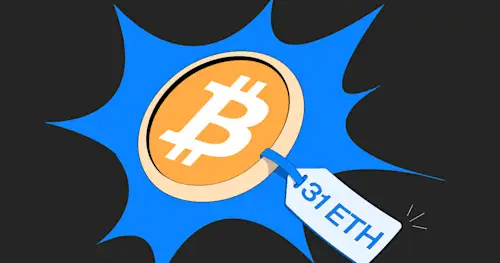Related Articles




Understanding how to read crypto price charts is a fundamental skill for anyone trading or investing in digital assets. Whether you’re a beginner exploring your first Bitcoin trade or a more experienced trader building technical strategies, the ability to interpret crypto charts empowers you to make informed, data-driven decisions.
In this guide, we’ll break down the core components of a cryptocurrency price chart—from candlestick formations to moving averages—so you can confidently analyze market trends, spot entry and exit points, and manage risk more effectively.
Unlike traditional markets, where price movements often follow scheduled events or macroeconomic cycles, crypto markets are currently driven largely by technical patterns, sentiment, and momentum. That’s why technical analysis (TA)—built on interpreting price charts—is one of the most widely used approaches to navigate the crypto space.
The vertical axis on the right side of the chart represents the price of a crypto asset. This shows how much of the quote currency is needed to purchase one unit of the base currency in a trading pair.
For example, in the ETH/USDT pair:
USDT (Tether) is the quote currency.
If ETH/USDT is trading at 3,000, it means 1 ETH is worth 3,000 USDT.
The horizontal axis along the bottom of the chart shows time. Charts are read from left (past) to right (present). You can adjust the time interval (e.g., 1 minute, 1 hour, 1 day) based on your trading strategy or time horizon.
The candlestick chart is the most commonly used chart type in crypto trading. Each candlestick shows four price points over a set time interval:
Open – the price at the start of the time period
Close – the price at the end of the time period
High – the highest price reached
Low – the lowest price reached
Green candles: Price closed higher than it opened (bullish)
Red candles: Price closed lower than it opened (bearish)
Traders use candlestick patterns to gauge market sentiment and anticipate reversals or breakouts.
Trading volume is typically displayed as vertical bars at the bottom of the chart. It shows the number of units traded during a specific time frame. High volume during a price move confirms strong market interest, while low volume can indicate weaker conviction.
Green volume bar: Coincides with a green candlestick (buying pressure)
Red volume bar: Coincides with a red candlestick (selling pressure)
A price level where an asset tends to stop falling due to buying interest. It acts like a price floor.
A price level where an asset tends to stop rising due to selling interest. It acts like a price ceiling.
Identifying these levels helps traders spot potential entry points (buy at support) or exit points (sell at resistance).
Moving averages (MAs) are widely used technical indicators that help smooth out short-term price fluctuations and reveal longer-term trends in the market. They are particularly useful for identifying the overall direction of an asset’s price over time, making them a fundamental part of many trading strategies.
There are two main types of moving averages commonly used by traders. The Simple Moving Average (SMA) calculates the average closing price of an asset over a specific number of time periods—such as the 50-day or 200-day SMA—providing a steady trend line. The Exponential Moving Average (EMA), on the other hand, gives more weight to recent price data, making it more sensitive to short-term price movements and better suited for identifying momentum shifts.
Traders often use moving averages to spot potential trend reversals or confirmations. Two popular patterns include the Golden Cross, where the 50-day moving average crosses above the 200-day moving average, typically signaling a bullish trend, and the Death Cross, where the 50-day moving average crosses below the 200-day moving average, which is often viewed as a bearish indicator. In general, when the price is trading above the 200-day moving average, the market is considered to be in an uptrend, while trading below it is seen as a downtrend.
Let’s say you’re analyzing ETH/USDT:
The chart shows a green candlestick at $3,000 with high trading volume.
ETH has bounced off a support level of $2,800 three times.
The 50-day EMA is trending upward and price is above the 200-day SMA.
Interpretation: Momentum is bullish. With confirmed support and trend direction, traders may consider this a strong buy setup—pending risk management.
To get better at reading charts, you’ll need access to real-time, responsive tools. Look for:
Custom timeframes (1m, 5m, 1h, 1d)
Built-in indicators (MA, RSI, MACD, Bollinger Bands)
Drawing tools (trendlines, channels, Fibonacci levels)
Mobile and desktop chart support
Mastering crypto price charts is essential for building a sustainable trading strategy. By learning to read candlestick patterns, track volume, understand moving averages, and identify support/resistance levels, you’ll be equipped to make smarter, more strategic trading decisions.
Flipster makes it easy for both new and experienced traders to read charts and execute trades with confidence. The Flipster platform features:
Advanced, real-time price charts with technical indicators
Over 350+ tokens to trade across spot and futures markets
One of the lowest trading fees in the market, helping you keep more of your profits
Clean and intuitive UI designed for fast execution and analysis
The Earn While Trading feature enables you to generate returns not only on idle balances but also on actively open trading positions
Whether you're using the app or desktop platform, Flipster provides a seamless experience to analyze price charts, manage risk, and capitalize on market trends.
Ready to put your chart skills into action? Sign up and start trading on Flipster today.
Disclaimer: This material is for information purposes only and does not constitute financial advice. Flipster makes no recommendations or guarantees in respect of any digital asset, product, or service. Trading digital assets and digital asset derivatives comes with a significant risk of loss due to its high price volatility, and is not suitable for all investors. Please refer to our Terms.


